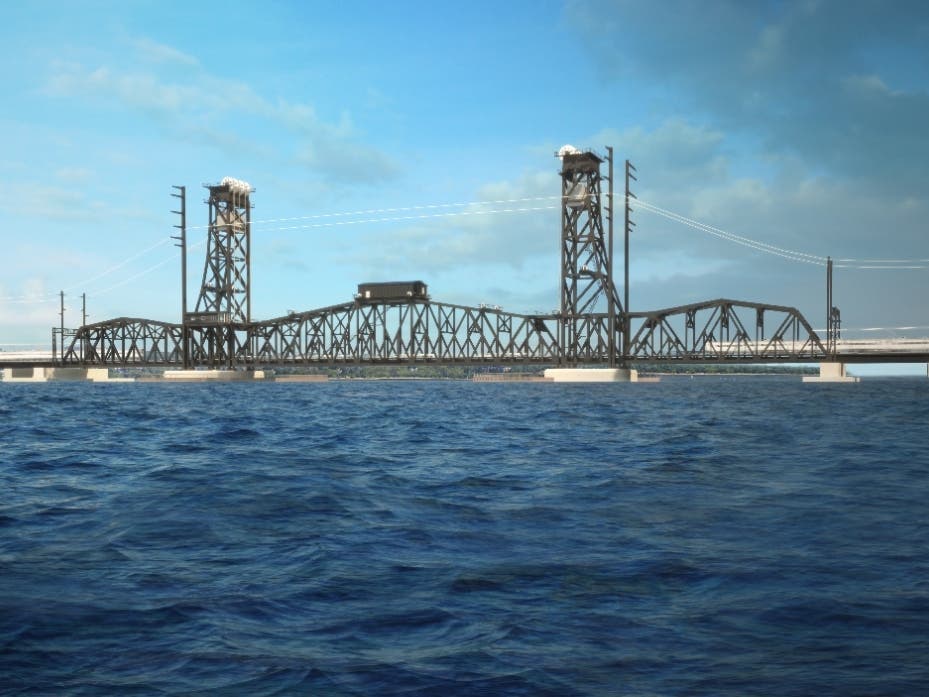Community Corner
NJ Transit Advances More Than $4b In Capital Projects Since 2018
Infrastructure Enhancements Pave Way for Better On-Time Performance and Customer Experience

This is a paid post contributed by a Patch Community Partner. The views expressed in this post are the author's own, and the information presented has not been verified by Patch.
2020 has changed us forever. It has given everyone a chance to re-prioritize and focus on what truly matters. Public agencies are no different, and while COVID-19 shut down many of the country’s public transportation authorities, NJ TRANSIT remained focused on its priorities and advanced projects that would help keep its customers safe, happy, and on time.
Not even the pandemic could stop NJ TRANSIT’s massive initiative to advance some of its largest capital projects. The agency is focusing its attention on projects that will stimulate post-COVID economic growth and improve safety, reliability, and infrastructure.
Find out what's happening in Woodbridgewith free, real-time updates from Patch.
NJ TRANSIT pushed forward during the pandemic and committed billions of dollars, as well as innumerable hours and manpower in over one hundred projects encompassing all facets of NJ TRANSIT service, including bus, Access Link, light rail, and rail that will drastically improve overall service.
However, NJ TRANSIT’s long-term commitment to New Jersey’s residents and visitors extends far beyond its bus, rail, and light rail service. Infrastructure investments are one of the many ways the agency seeks to promote economic prosperity. To maximize that potential, NJ TRANSIT has strengthened its commitment to Transit Oriented Development (TOD) Projects.
Find out what's happening in Woodbridgewith free, real-time updates from Patch.
TOD projects seek to create mixed-use developments near transit hubs. These developments create convenient compact neighborhoods that promote sustainable local economic growth, help reduce roadway traffic, improves safety, lifestyle and cuts down on greenhouse emissions.
Most recently, NJ TRANSIT has been making strides to advance a TOD project located at Metropark Station in Woodbridge. In mid-July, the agency released a Request for Proposals (RFP) to the four finalists who successfully submitted responses to the previous request for Statements of Qualifications and Expressions of Interest.
Upcoming, and current TOD projects include the above-mentioned Woodbridge project, as well as other locations in Somerville, Orange, Aberdeen-Matawan, Bayonne, and Jersey City.
This push to advance projects that will dramatically improve New Jerseyans quality of life is most poignantly reflected in the agency’s commitment to see capital projects through, even at the height of a global pandemic.
In 2017, NJ TRANSIT had $60 million in hard money contracts out on the street. In the last three years alone, the agency has advanced more than $4 billion in capital projects.
NJ TRANSIT’s most ambitious capital project is the highly anticipated $1.8 billion Portal North Bridge replacement project which is expected to receive its construction award later this year. The area surrounding the bridge is an integral link in the highly transited zone between Newark Penn Station and Penn Station New York.

The more than 100-year-old original structure is known to cause severe delays to the roughly 200,000 rail passengers that rode over it before the pandemic and were forced to endure delays when the bridge would malfunction while in the process of opening or closing for maritime traffic.
The modern replacement bridge will rise over 50 feet above the river so that maritime traffic can easily pass underneath the new high-level structure, therefore, foregoing any chance of complications and eliminating delays, while improving speed and capacity across the span.
Another significant bridge replacement project that will help build resiliency is the Raritan River Bridge Replacement. The $600 million project will replace the over century-old Raritan River Bridge which became submerged and suffered extreme damage by Superstorm Sandy. The new two track vertical lift bridge will be more resilient and include additional vertical clearance above flood elevation.
The upgrades will ensure more reliable and efficient rail operations, ease bridge congestion, provide improved resiliency during and following extreme weather events, and promote continuity of service.
Another project that will help alleviate congestion is the $195 million Long Slip Fill and Rail Enhancement project in Hoboken. It is a crucial element of the larger Hoboken Redevelopment project which will address many of the state of good repair and resiliency challenges which the Hoboken Terminal faces as it supports rail, bus, and light rail customers while providing access to PATH trains and ferries to and from New York City.
The Long Slip Canal is adjacent to the Hoboken Terminal. The one-third mile-long, 100-foot wide canal has been inactive for 40 years. Superstorm Sandy’s storm surge caused the canal to overflow resulting in significant flood damage to both the passenger and yard facilities at the Hoboken Terminal.
After the surge, the Hoboken Terminal and several tracks were rendered temporarily out of service. These brief closures crippled rail capacity at this critical transit hub.
The Long Slip Fill and Rail Enhancement project is separated into two phases, the first of which includes filling the existing canal. The second phase will see the construction of six new tracks with three high-level platforms over the filled canal.
The extra tracks will be constructed above flood elevation and provide emergency capacity in the event multiple main track outages are incurred, such as following an extreme weather event. The project will also provide opportunities for increasing capacity for rail, bus, light rail, and ferry service.
The Portal North Bridge, Long Slip Fill, and Rail Enhancement, and Raritan River Bridge projects are just a few of the many NJ TRANSIT capital projects that the agency continues to forge ahead with. Long-term investments in infrastructure will help NJ TRANSIT improve the customer experience, by incorporating sustainability and resilience into the project designs.
Through its dedication to advancing these capital projects, NJ TRANSIT proves that as New Jersey grows and evolves, so does NJ TRANSIT.
This post is an advertorial piece contributed by a Patch Community Partner, a local brand partner. To learn more, click here